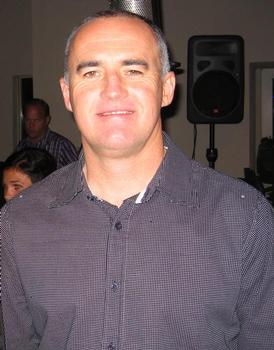In conjunction with its full year earnings release, Billabong executives held a conference call with Australian stock analysts last week. Billabong CEO Derek O’Neill and CFO Craig White spoke on the call.
Here are some highlights from the call that provide more insight into Billabong’s business and business trends. Click here to see a detailed breakdown of the full-year results.
Derek O’Neill cited several good points in the company’s results, including its gross profit margins of 53.2 percent, growing revenues over $1.5 billion for the first time and growing cash flow.
He noted on the call, however, that Billabong reported its first ever profit decline, with Net Profit After Tax falling 9.2 percent to $160.2 million, excluding charges.
While the company closed a few of its stores during the year, it had net store growth. The total number of company stores grew to 335.
Billabong reduced its exposure to retailers that have shifted focus from quality branded offerings to value, Derek said.
Billabong is expecting retail comps throughout the year to rise in the low single digits once it begins to anniversary bad comps from last fall.
Billabong restructured its relationship with CIT a year ago and now retains ownership of its receivables, which protects Billabong if CIT goes under. Billabong pays CIT a commission for collecting the receivables.
Derek believes the company has handled its inventory well and continues to tighten inventories. The company has used its own stores and clear out channels to get rid of excess inventory.
Back-to-school has kicked in a little later this year. The last week of July and the first couple weeks of August were a touch better than some retailers expected.
For the first time in nine or 10 months, people are actively going into stores and searching out fashion forward, innovative products, Derek said. Billabong has seen a shift from basic products. For example, shoppers are shifting from hooded fleece to lined and unlined woven shirt jackets, plaids and are returning to sweaters.
When the product is right, price has not been an issue, he said.
Billabong is now chasing key product, something it hasn’t done in eight or nine months and “that’s refreshing to see,” Derek said. He said there’s a feeling in the last three or four weeks that good news may be coming.
However, while there are some encouraging signs, it’s way too early to call it a turnaround.
Billabong has been meeting with key retailers in the U.S. to explain the importance of forward ordering, Derek said.
Billabong has reduced its global workforce 5 percent. Most of the reduction has come from attrition and from casual labor in the retail division in the U.S.
Sales to Pacific Sunwear fell 30 percent for the year. If PacSun is stripped out, Billabong sales fell in the U.S. at the specialty channel 9 or 10 percent and Element declined 12 percent, which was less of a decline than most comp declines experienced by speciality retailers, Derek said. Derek said the brands have held up pretty well in the specialty channel and retailers are telling the company it has gained some share. (Click here to see how brand performed on a global basis.)
The company continues to be committed to not discounting, Derek said.
When asked about brand performance in Europe, Derek said Element has big potential in Europe, Nixon is covering “fantastic ground” and Von Zipper is fun and exiting to Europeans.
With those retailers that are ordering for holiday, orders are down on average 15 percent, which is a lower trend than last holiday but a better trend than this fall.
Billabong is not selling to about 10 percent of its previous retail accounts because of credit concerns or because the accounts have gone out of business.






